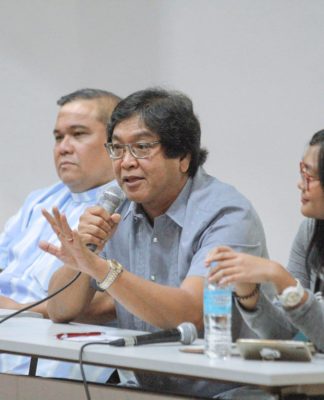
NAMES make no difference in medicines, we are told, but prices do.
Choosing between a generic or branded medicine has always been a tough decision for consumers, who want value for their money but do not want to sacrifice quality for affordability.
The two-year-old Republic Act 9502—also known as the “Universally Accessible Cheaper and Quality Medicines Act of 2008”—seeks to drastically lower the prices of medicines in the country. With this groundbreaking piece of legislation, it is hoped that the prevailing attitude that generic drugs are inferior to branded medicine would vanish.
Branding the generic
Generic medicines are generally cheaper compared to their branded counterparts because the latter operate under a specific patent, their manufacturers investing millions in research and development over the years.
But in case a manufacturer declines to apply for renewal after patent expires, pharmaceutical companies tend to buy the rights for the drug and sell it as a branded medicine, according to Aileen Balane, supervisor of the UST Pharmacy.
Maricar Perez, corporate affairs analyst of the United Laboratories (Unilab), said a tight market competition in the pharmaceutical industry benefited mostly ordinary consumers.
“While reducing the price of our medicines means reduced profits, we believe that broader access to medicines would essentially translate to more demand. Given the expected increase in demand, our supply is expected to increase as well,” she explained.
A medicine’s cheap price often associated to low quality may not be always true, according to Balane.
She explained that drugs do not ensure absolute safety because each drug has the potential to cause harm to a person. The consumer’s manner and frequency of medicine intake are some of the factors, which may also affect the efficacy of a certain drug.
Despite these common misconceptions, some people still prefer buying generic drugs because they are cheaper, while others opt to buy branded ones parsly because of their popularity. A paracetamol ad, for instance, features a male celebrity with the catchphrase, “Ingat” (Take care).
“Both drugs have the same effects. I would not opt for something more expensive like branded drugs when I know I can avail of the same effects in the generic ones,” said Bettina Manalili, former nutritionist of the Department of Science and Technology.
“It doesn’t really matter if the drug is generic or branded because it depends on the patient’s preferences which sometimes depend on what is popular nowadays,” Balane added.
Cheaper medicines
The Cheaper Medicines Law became an answer to consumers’ plea, allowing the regulation of branded medicines to lower costs.
“Given the difficulties posed by the [Cheaper Medicines] Act, pharmaceutical companies tried to moderate the increasing cost of medicines by practicing efficiency in operations, which in turn lessened production costs,” Perez said.
Positive feedback followed the ratification of the bill as medicine prices decreased significantly. Prices of medicines like Calcibloc OD, Lifezar, Gluconase, and Llanol have been cut down prices by almost half during the same year the act was approved.
“People can now afford these medicines unlike before, when some patients do not follow the doctor’s prescription because they are cutting down their medicinal expenses,” Balane said.
This has led to protests by pharmaceutical companies who saw the law as promoting generic medicines at the expense of branded products.
Under the Executive Order No. 821, the Mandatory Drug Retail Price (MDRP) will be responsible for setting drugs’ market price ceilings to make it more affordable to consumers.
While many thought that the approval of MDRP posed a large difference on the drug prices, statistics still show that medicine prices here in the Philippines are still higher compared to those in other countries.
According to pharmainfo.net, India manufactures drugs at about 1000 to 4000 per cent cheaper than average products sold in the United States. Compared to prices in the Philippines, the price of medicine is a fraction higher than US.
“Some medicines are still expensive because not all drugs are covered by the MDRP. Other drugs not enlisted in the MDRP are still expensive,” Balane said.
Chapter 3, Section 26 of the Act states that a minimum pack of medicine sold on retail should bear the words “RETAIL PRICE NOT TO EXCEED” preceded by “UNDER DRUG PRICE REGULATION.”
However, Balane said this procedure was not observed by some companies.
Balane explains that other pharmaceutical companies have voluntarily reduced their prices even if some decided not to follow the guidelines set by MDRP because of high manufacturing expenses.
“I do not see any label on the minimum packs of the drugs,” she said. “But their prices still follow the MDRP. It does not need a label to say so because it is mandatory.”

















thanks to this article.. i’ve got some info for my reasearch work
You’re welcome. 🙂